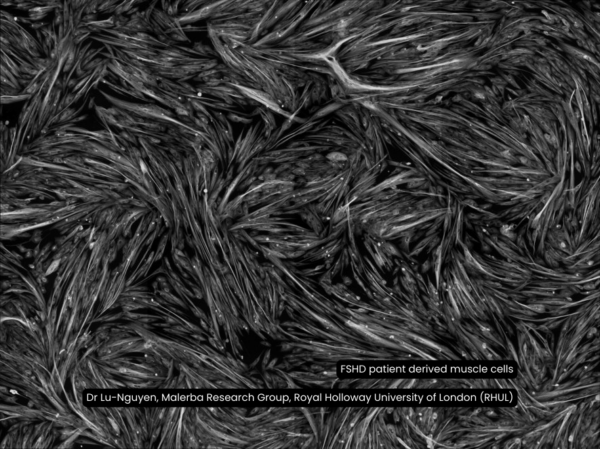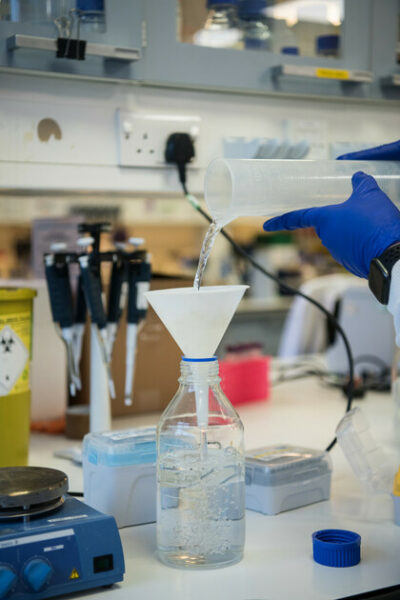By identifying the changes in a person’s DNA that cause the disease, we can find out why people with the same condition are affected differently. This will mean more people receive a genetic diagnosis – giving them answers and helping us all understand these conditions better.
Understanding Ullrich muscular dystrophy
Our researchers revealed how a common genetic change in the COL6A1 gene causes Ullrich muscular dystrophy. Then, they developed ‘molecular patches’ which could correct the problems this change causes.
One day, this could lead to treatments for Ullrich muscular dystrophy, to stop the muscle from getting weaker.
Discovering genes behind the conditions
As well as the genetic change above, our scientists have identified many other genes and changes, which cause muscle wasting conditions. These include congenital muscular dystrophies, limb girdle muscular dystrophies, Charcot-Marie-Tooth disease, and myotonic dystrophy type 1.
Some of these genes and changes are now included in diagnostic tests, and others are the targets of potential new treatments.



